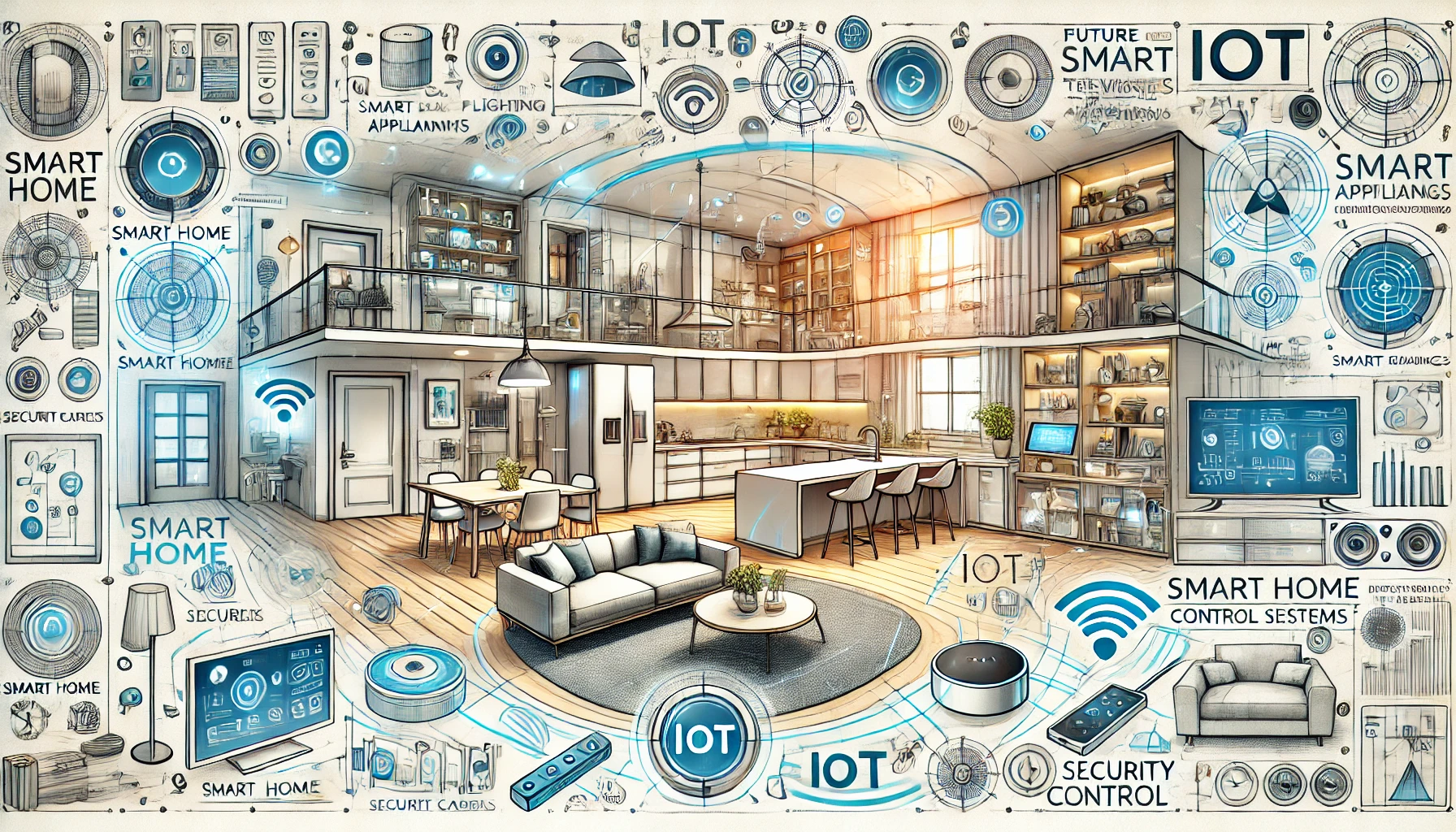Embracing the Future: The Revolution of Smart Home Technologies

The concept of a smart home is no longer a futuristic dream; it has become an integral part of modern living. With rapid advancements in technology, smart home solutions are transforming the way we interact with our living spaces. From enhancing convenience to bolstering security and improving energy efficiency, smart home technologies offer a plethora of benefits. In this blog, we delve into the world of smart homes, exploring the latest trends, benefits, and considerations for adopting this cutting-edge lifestyle.
What Are Smart Home Technologies?
Smart home technologies encompass devices and systems that use the internet, sensors, and automation to control and monitor various aspects of a home. These systems are designed to improve comfort, security, and energy efficiency by enabling seamless communication between devices. Common examples include smart thermostats, security cameras, lighting systems, and voice-controlled assistants like Amazon Alexa, Google Assistant, and Apple Siri.
The Key Components of a Smart Home
- Smart Lighting: With the ability to adjust brightness, color, and timing through apps or voice commands, smart lighting solutions like Philips Hue and LIFX offer both convenience and energy savings.
- Smart Security Systems: These systems include cameras, doorbells, motion detectors, and smart locks that provide real-time monitoring and control through mobile apps, ensuring your home is safe at all times.
- Smart Thermostats: Devices like Nest and Ecobee learn your temperature preferences and optimize heating and cooling, helping to reduce energy bills while maintaining comfort.
- Smart Appliances: From refrigerators that notify you about low stock to washing machines that can be scheduled remotely, smart appliances add a new level of convenience.
- Voice Assistants: Central to many smart homes, devices like Amazon Echo and Google Nest Hub act as the control hub for various smart devices, allowing you to manage your home with simple voice commands.
- Smart Entertainment Systems: Advanced systems like Sonos speakers and smart TVs provide personalized entertainment experiences with seamless connectivity.
Benefits of Smart Home Technologies
- Enhanced Convenience: Smart home devices automate repetitive tasks, such as turning off lights or adjusting the thermostat, freeing up your time for more important activities.
- Energy Efficiency: By optimizing energy usage, smart thermostats and lighting systems help reduce utility bills and contribute to environmental sustainability.
- Improved Security: Real-time monitoring and alerts from smart security systems provide peace of mind, even when you’re away from home.
- Personalized Living: Smart home technologies can adapt to your preferences, creating a tailored environment that suits your lifestyle.
- Remote Control: Manage your home from anywhere using a smartphone app, ensuring you’re always in control, whether you’re at work or on vacation.
Emerging Trends in Smart Home Technologies
- Integration with Artificial Intelligence (AI): AI-powered devices are becoming smarter, offering predictive capabilities and improved automation based on user behavior.
- Sustainability Focus: New smart home solutions prioritize energy efficiency and incorporate renewable energy sources like solar panels.
- Interoperability: Efforts to create universal standards, such as Matter, ensure seamless communication between devices from different brands.
- Health Monitoring: Smart home devices are expanding into health and wellness, with innovations like air quality monitors, sleep trackers, and fitness equipment.
- 5G Connectivity: Faster and more reliable internet through 5G enhances the performance of smart home devices, enabling real-time responses and better integration.
Challenges and Considerations
- Privacy Concerns: With smart devices collecting data, ensuring the security of personal information is crucial. Always choose devices with robust encryption and privacy policies.
- Compatibility Issues: Not all devices work well together. Research compatibility before purchasing to avoid integration challenges.
- Cost: While prices are decreasing, some advanced systems can still be expensive. Consider your budget and prioritize essential devices.
- Learning Curve: Setting up and managing smart devices can be daunting for beginners. Start small and gradually expand your system.
How to Get Started with a Smart Home
- Identify Your Needs: Decide what aspects of your home you want to automate or enhance, such as security, lighting, or energy management.
- Start with a Hub: Consider investing in a central hub, like a smart speaker or display, to control multiple devices.
- Choose Compatible Devices: Opt for devices that are compatible with your existing ecosystem, ensuring smooth integration.
- Plan for Scalability: Design your smart home with future expansion in mind, choosing systems that allow for adding more devices over time.
- Educate Yourself: Learn about device features, setup processes, and maintenance to make informed decisions.
The Future of Smart Homes
As technology continues to evolve, smart homes will become more intuitive, efficient, and accessible. The integration of AI, machine learning, and IoT will enable homes to anticipate needs, offer solutions, and enhance quality of life in ways we’ve yet to imagine. Embracing smart home technologies is not just about upgrading your home; it’s about stepping into a more connected and sustainable future.
In conclusion, the smart home revolution is here to stay, offering unparalleled convenience, efficiency, and security. By understanding the options available and planning your setup thoughtfully, you can create a home that truly works for you.



